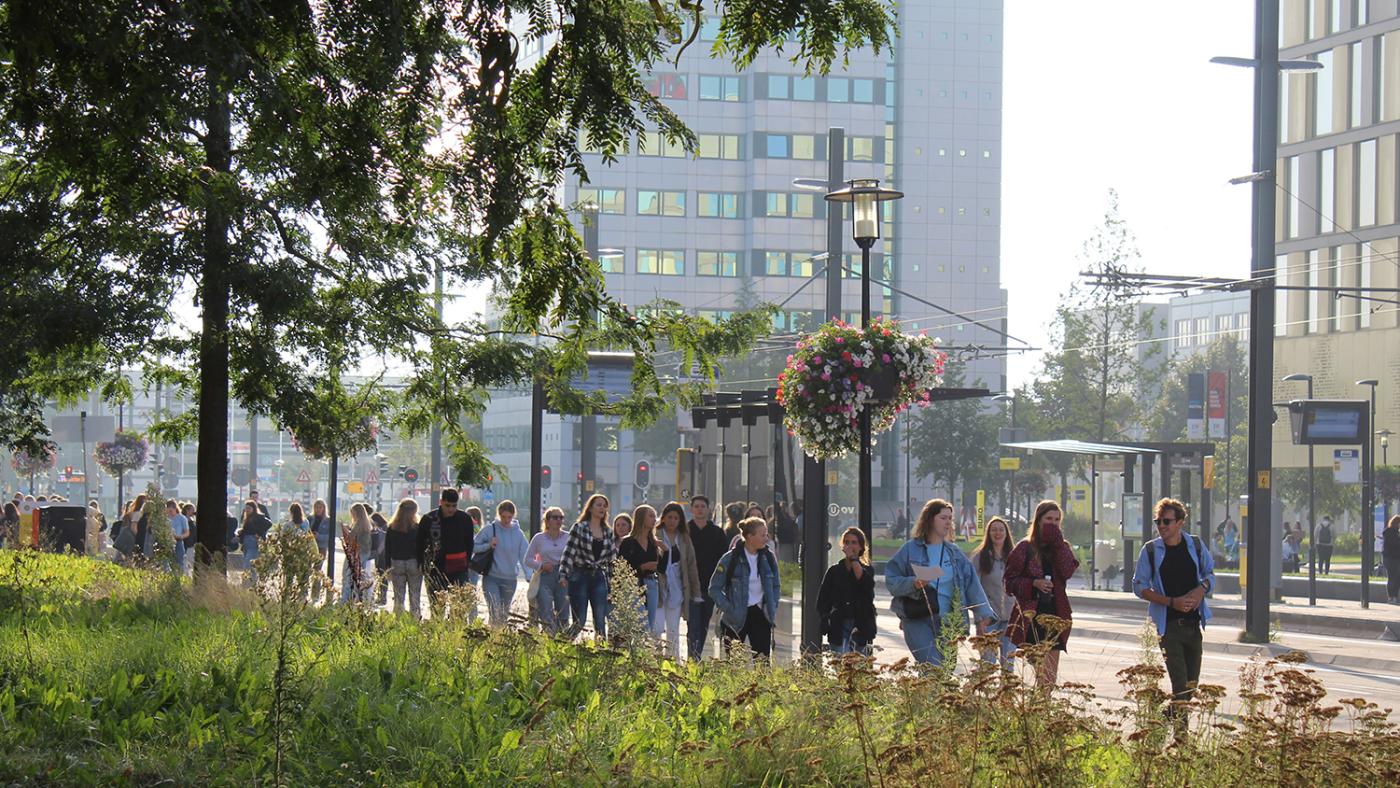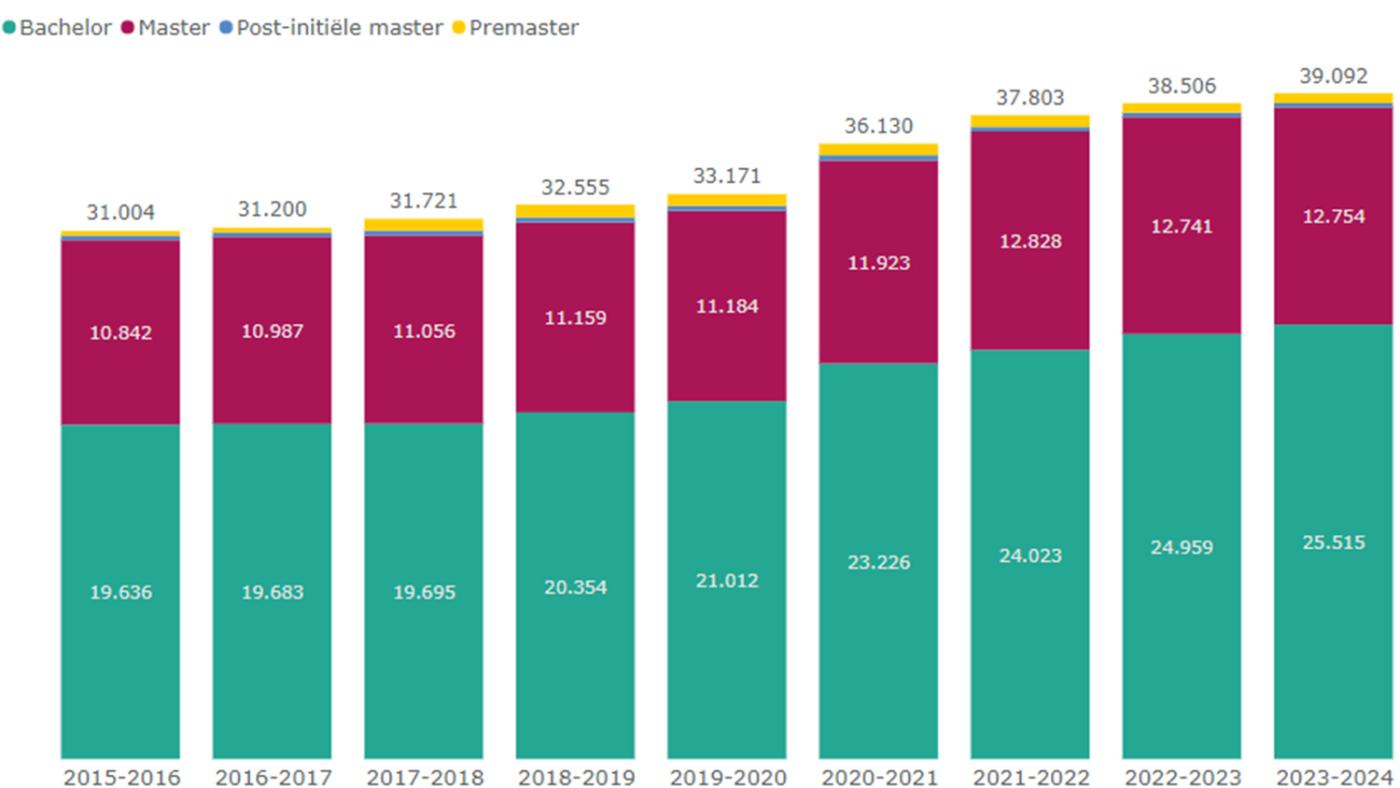More Bachelor’s and Master’s students
Utrecht University continues to grow

UU is popular with young people who want to study in higher education. Although the university does not have the ambitions to grow its numbers, the number of new Bachelor’s, Master’s and pre-Master’s students is increasing this academic year. This is evident from the provisional influx figures from October this year. The final figures will follow in early 2024.
Nationally, the number of university students grew by 700 students to a number of 340,700; a growth of 0.2 percent. UU grew by 586 students to a total of 39,092, which is a growth of 1.5 percent. According to the forecasts, this trend of slightly increasing students numbers at the UU will continue in the coming years.

Number of UU students enrolled as of October 1st, main study programmes. Source: Osiris, dated 17 October 2023.
The number of first-year students in the Bachelor’s programmes is rising at the UU, but not at other Dutch universities. Compared to the previous academic year, this year their number has grown with 3 percent. In the Master’s phase, however, growth can be seen nationwide. This is an increase of 4 percent, just like at UU. The number of pre-Master’s students has increased by 9 percent.
Explanation
The growth in the number of new students in both the Bachelor’s and Master’s programmes is due to the introduction of the basic grant, according to the UU. Young people might have waited a year before starting or continuing their studies.
The university did not expect an increase in first-year Bachelor’s students. This was because there were fewer eligible high school students and they passed their school exams at lower rates this year. In the previous year, more young people graduated from pre-university education, but a large number of them chose not to go to university right away. Presumably, the university thinks, because it was waiting for the re-introduction of the basic grant. For the same reasons, students with a Bachelor’s degree would also have waited a year before continuing their studies with a Master’s degree.
International students
The influx of international students is the same as last year. A total of 2750 students from abroad have registered for a UU Bachelor’s or Master’s programme. Nation-wide, the influx is levelling. For the first time in years, the influx of international first-year students has even decreased slightly.
The total number of international students at UU has grown, however. This is due to the fact that more students joined than left due to graduation, for example. As a result, the total number of international students at UU grew by 7 percent to 5900 students. In total, international students make up 15 percent of all students, which means that about 1 in 7 students is an international.
Looking at the nationalities of international students, the largest growth in the Bachelor’s programmes appears to be among students from the United States. Last year there were 24 and this year 48. UU is still most popular with German (95 first-years) and Italian students (90 first-years).

Bachelor’s degree EEA, non-EEA and non-international first-year enrolments at UU as of October 1st. Source: Osiris, dated 17 October 2023.
The intake in the Master’s phase has increased among students from outside Europe. These are students who have to pay the institutional tuition fees, an amount several times higher than the statutory tuition fees paid by Dutch and other European Union students. The influx is mostly higher among Chinese students: their number increased by 23 to a total of 167.
In the Master’s phase, too, the influx of German students is the highest. This year, 230 German students started a Master’s degree.

Master’s degree EEA, non-EEA and non-international first-year enrolments as of October 1st at UU. Source: Osiris, dated 17 October 2023.
In a message on Utrecht University’s website, Rector Henk Kummeling says he cherishes the international character of the university. “As a university, we operate in an international environment by definition. Our international character contributes to a stimulating academic and intellectual climate. It also fits in with the open attitude that we want to propagate as a university. We think it’s important that our international community also feels welcome here.”
Which study programmes
There are also a number of study programmes which have grown remarkably. These are the Human Geography & Spatial Planning and Physics & Astronomy programmes. The former had 149 first-years last year compared to 210 this year, and the latter has gone from 128 to 169 first-years.
There has also been a notable decline. The Economic & Business Economics programme has fallen sharply in the number of first-year students: from 570 to 492.
In the Master’s programmes, the faculty of Geosciences is once again doing well. Spatial Planning has grown by 69 percent; Energy Science with 51 percent and Marine Sciences with 63 percent. At the Faculty of Law, Economics and Governance, the Master’s in Private Law has grown by 73 percent.